Abstract
An inhibitor of Clostridium perfringens formed when low levels of nitrite were autoclaved with a defined chemical medium. A systematic study of the medium revealed that only amino acids and mineral salts were involved in the production of this inhibitor, which was proven to be a toxic compound formed from cysteine, ferrous sulfate, and sodium nitrite. The inhibitor was compared to several known compounds. S-nitrosocysteine inhibited the test organism, but would not form in the test system in amounts large enough to explain the observed inhibition. Roussin red salt was unstable in the test system and therefore was not the inhibitor. Roussin black salt, which was also inhibitory, could form in sufficient amounts to explain the inhibition. A complex of cysteine, iron, and nitrie oxide was detected in the autoclaved solution of cysteine, ferrous sulfate, and sodium nitrite; this cysteine complex did not appear to be inhibitory, however, at levels which could form in the autoclaved medium. The observed inhibition may have been due to the combined effects of sublethal concentrations of each compound.
Full text
PDF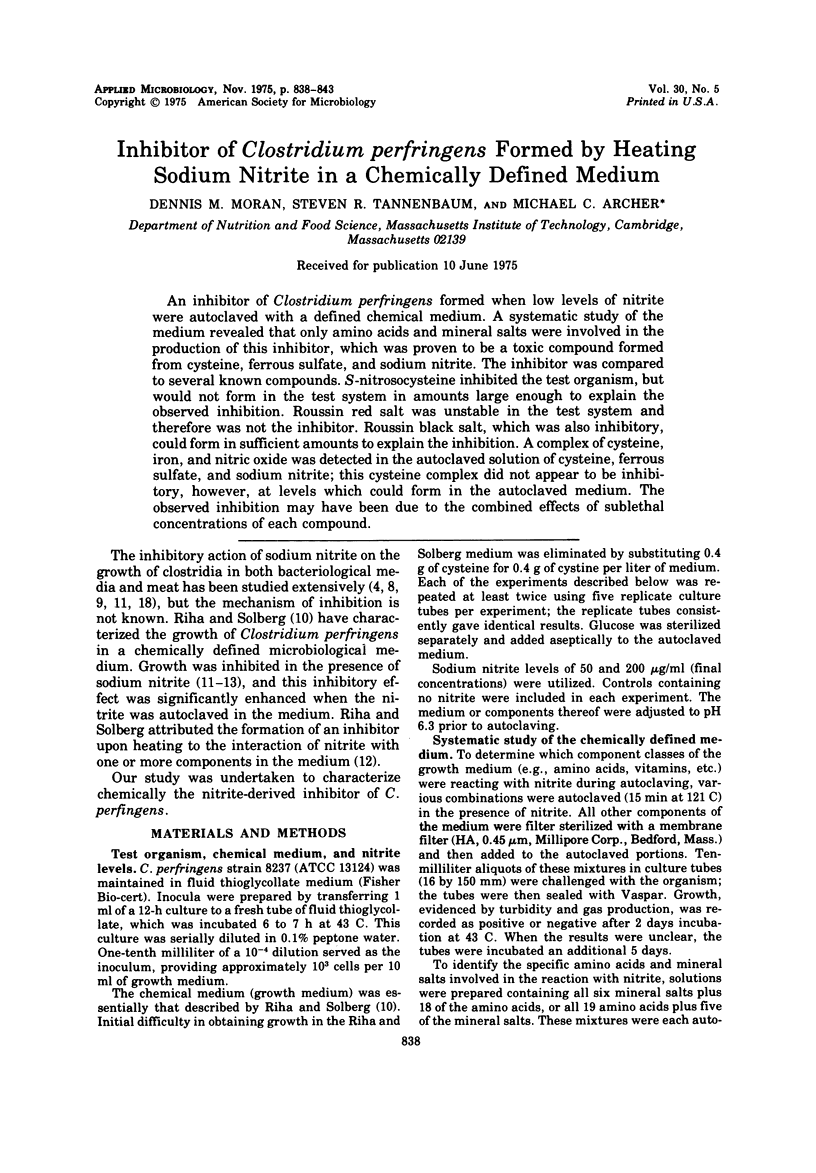
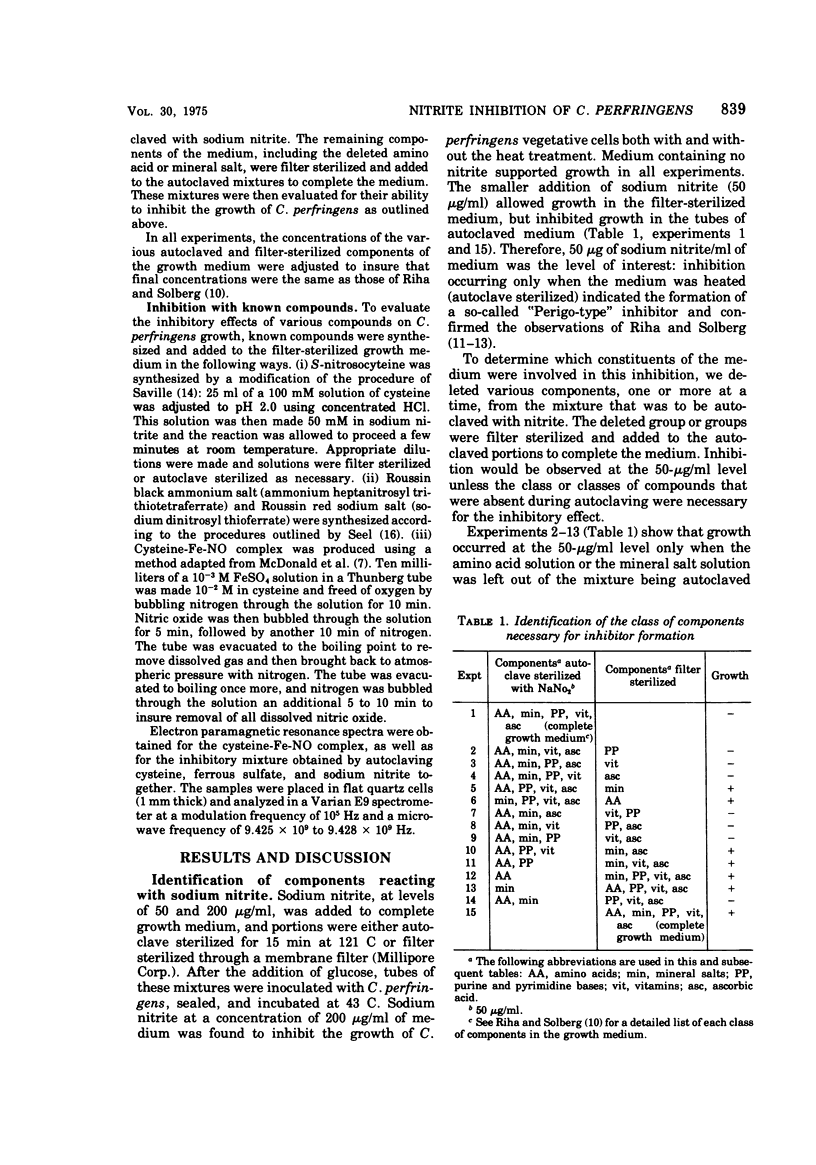
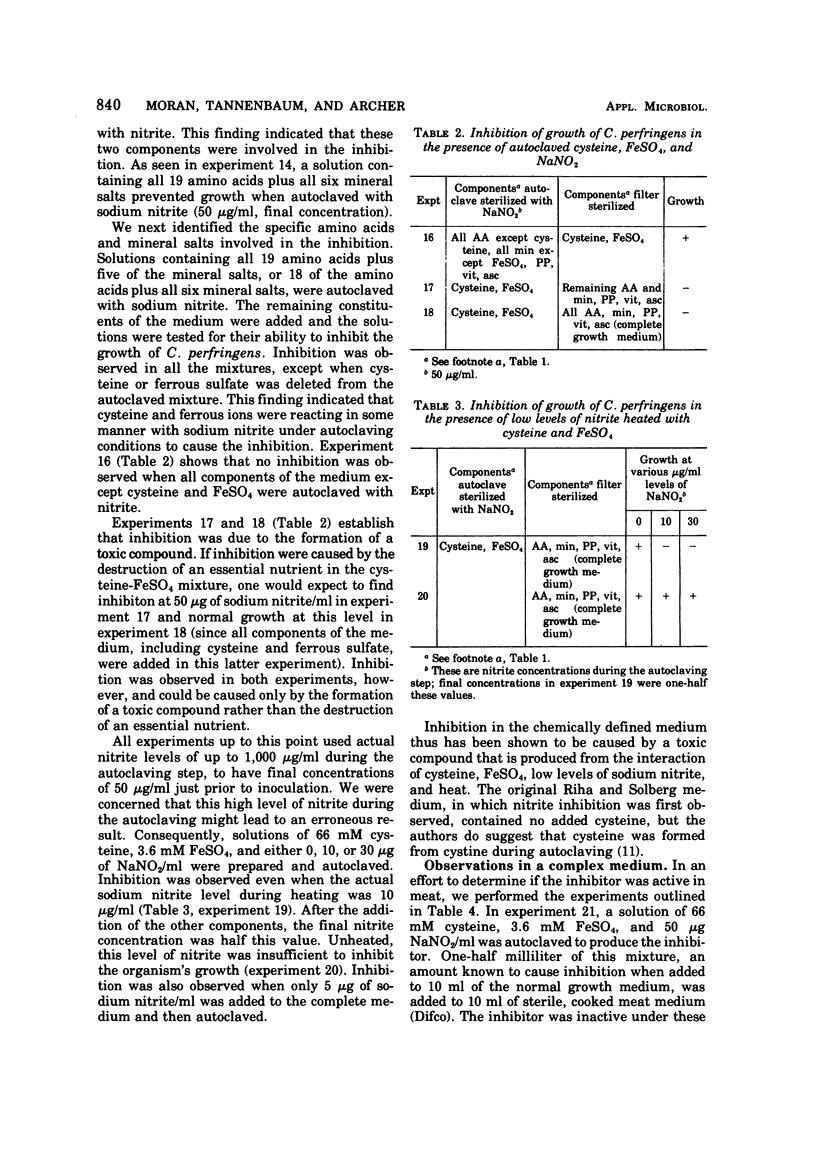
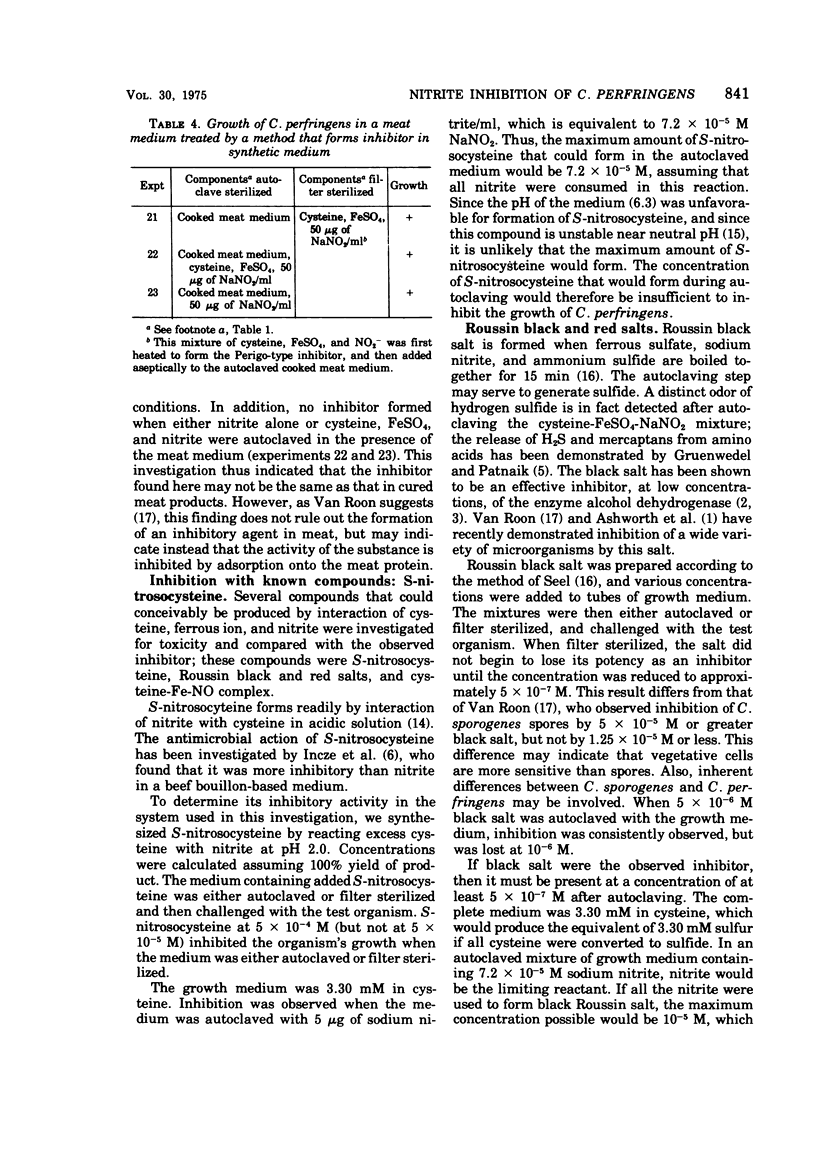
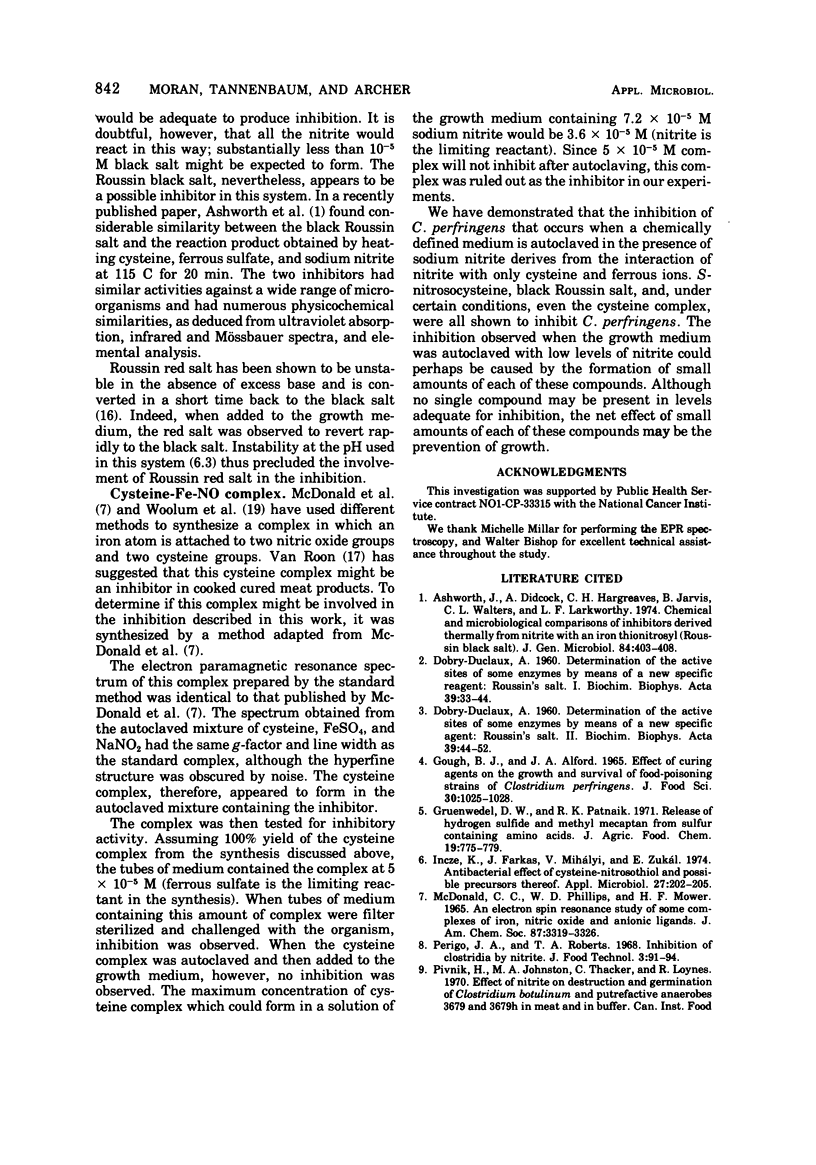
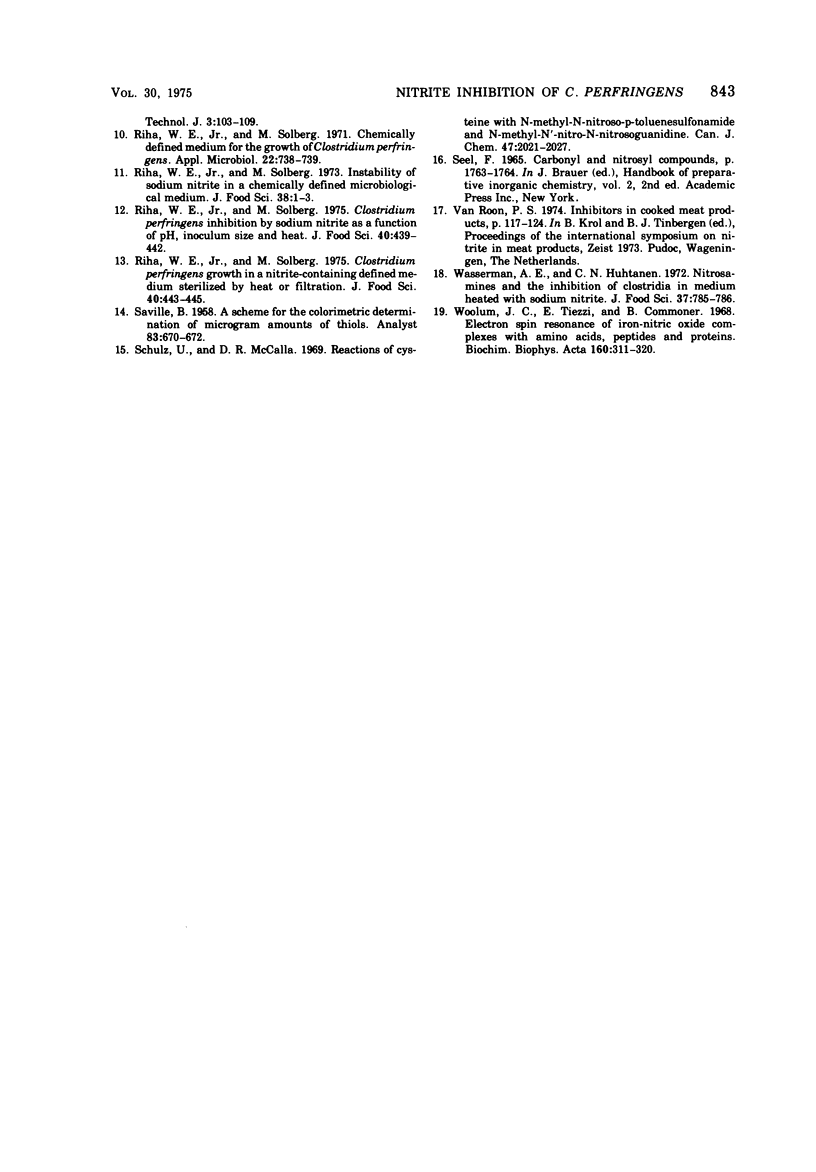
Selected References
These references are in PubMed. This may not be the complete list of references from this article.
- Ashworth J., Didcock A., Hargreaves L. L., Jarvis B., Walters C. L., Larkworthy L. F. Chemical and microbiological comparisons of inhibitors derived thermally from nitrite with an iron thionitrosyl (Roussin black salt). J Gen Microbiol. 1974 Oct;84(2):403–408. doi: 10.1099/00221287-84-2-403. [DOI] [PubMed] [Google Scholar]
- DOBRY-DUCLAUX A. [On the determination of the active sites of certain enzymes by means of a new specific reagent, Roussin's salt. II]. Biochim Biophys Acta. 1960 Mar 25;39:44–52. doi: 10.1016/0006-3002(60)90120-7. [DOI] [PubMed] [Google Scholar]
- DOBRY-DUCLAUX A. [On the determination of the active sites of certain enzymes by means of a new specific reagent, Roussin's salt. I]. Biochim Biophys Acta. 1960 Mar 25;39:33–44. doi: 10.1016/0006-3002(60)90119-0. [DOI] [PubMed] [Google Scholar]
- Gruenwedel D. W., Patnaik R. K. Release of hydrogen sulfide and methyl mercaptan from sulfur-containing amino acids. J Agric Food Chem. 1971 Jul-Aug;19(4):775–779. doi: 10.1021/jf60176a026. [DOI] [PubMed] [Google Scholar]
- Incze K., Farkas J., Mihályi V., Zukál E. Antibacterial effect of cysteine-nitrosothiol and possible percursors thereof. Appl Microbiol. 1974 Jan;27(1):202–205. doi: 10.1128/am.27.1.202-205.1974. [DOI] [PMC free article] [PubMed] [Google Scholar]
- Riha W. E., Jr, Solberg M. Chemically defined medium for the growth of Clostridium perfringens. Appl Microbiol. 1971 Oct;22(4):738–739. doi: 10.1128/am.22.4.738-739.1971. [DOI] [PMC free article] [PubMed] [Google Scholar]
- Woolum J. C., Tiezzi E., Commoner B. Electron spin resonane of iron-nitric oxide complexes with amino acids, peptides and proteins. Biochim Biophys Acta. 1968 Aug 13;160(3):311–320. doi: 10.1016/0005-2795(68)90204-3. [DOI] [PubMed] [Google Scholar]


